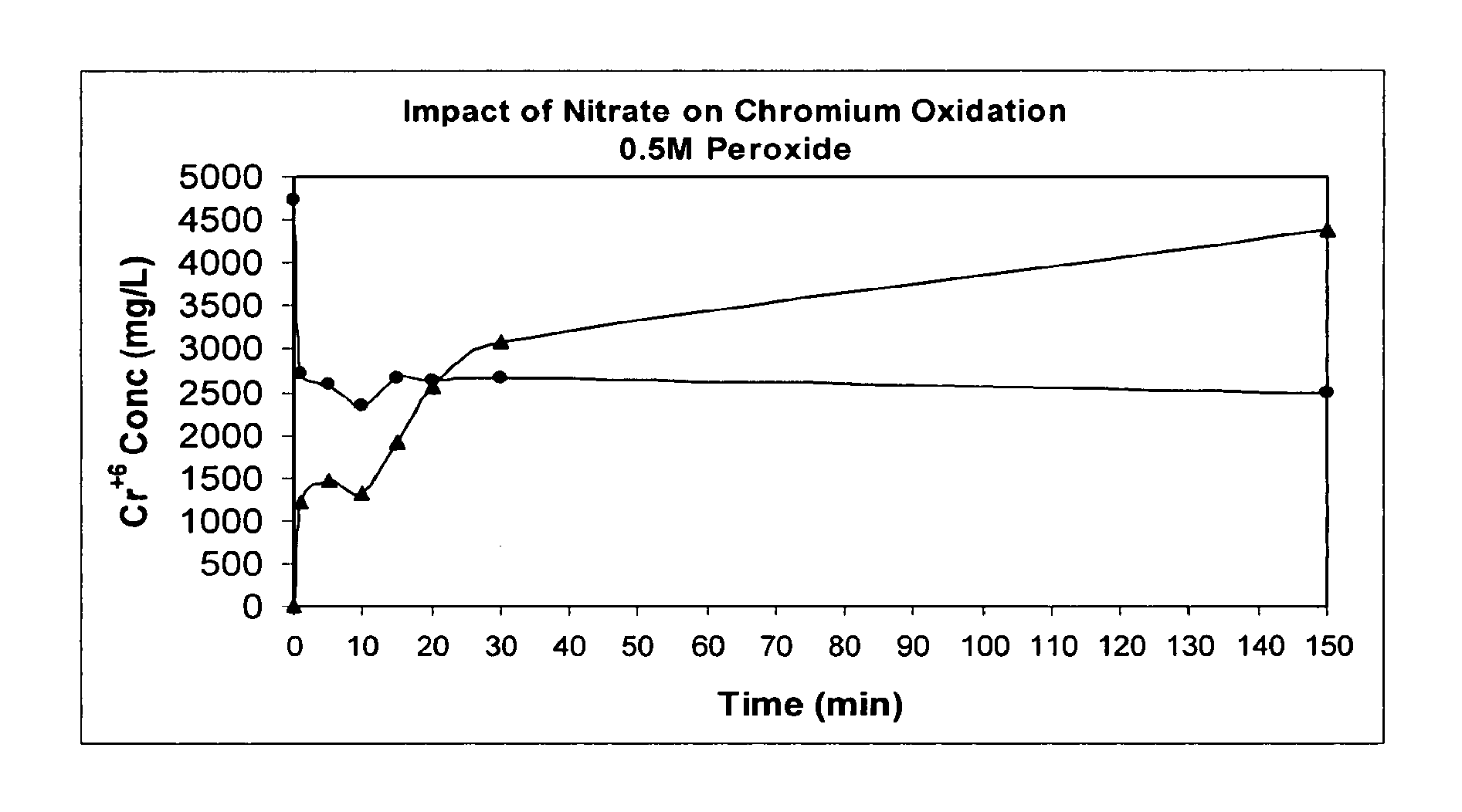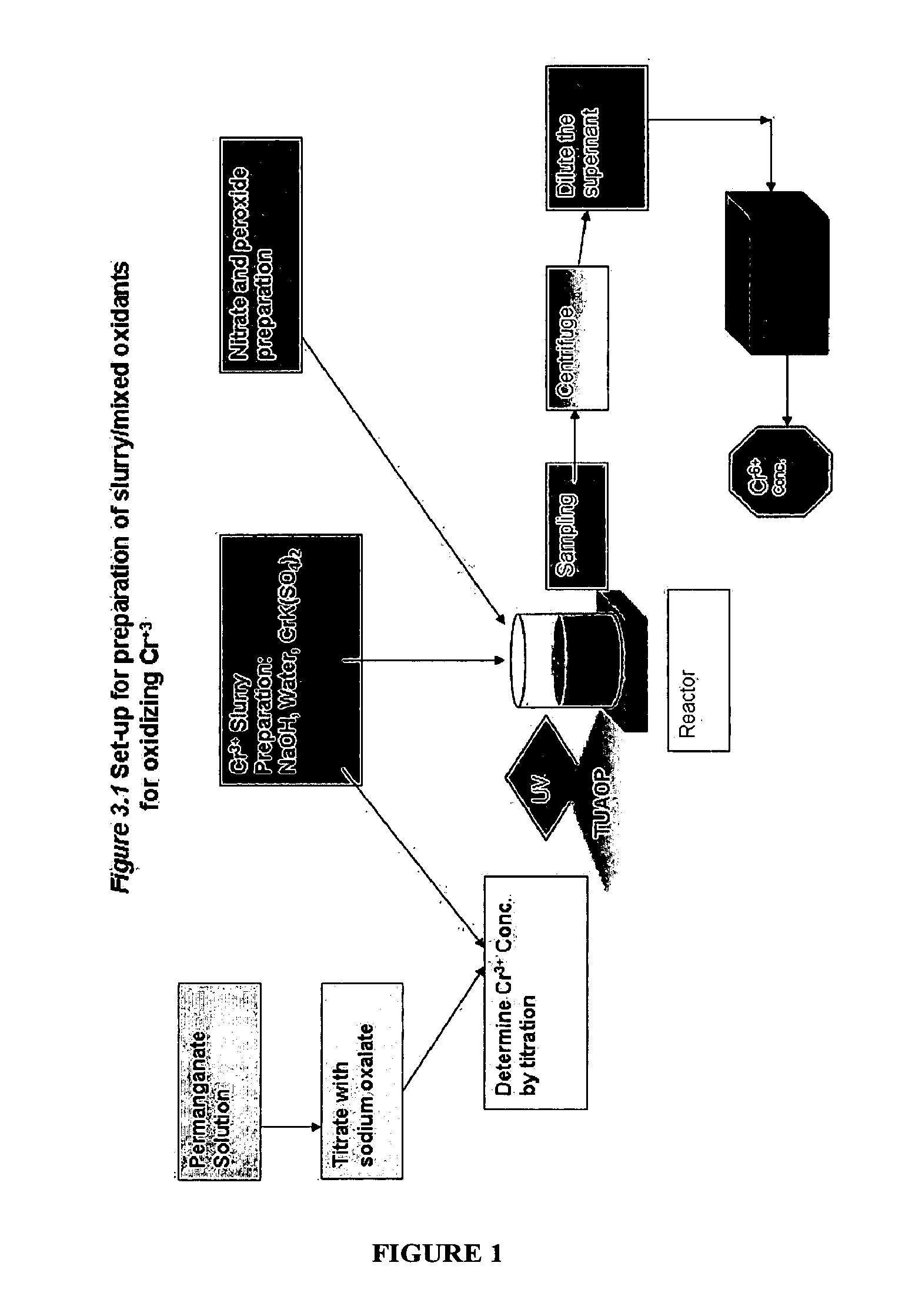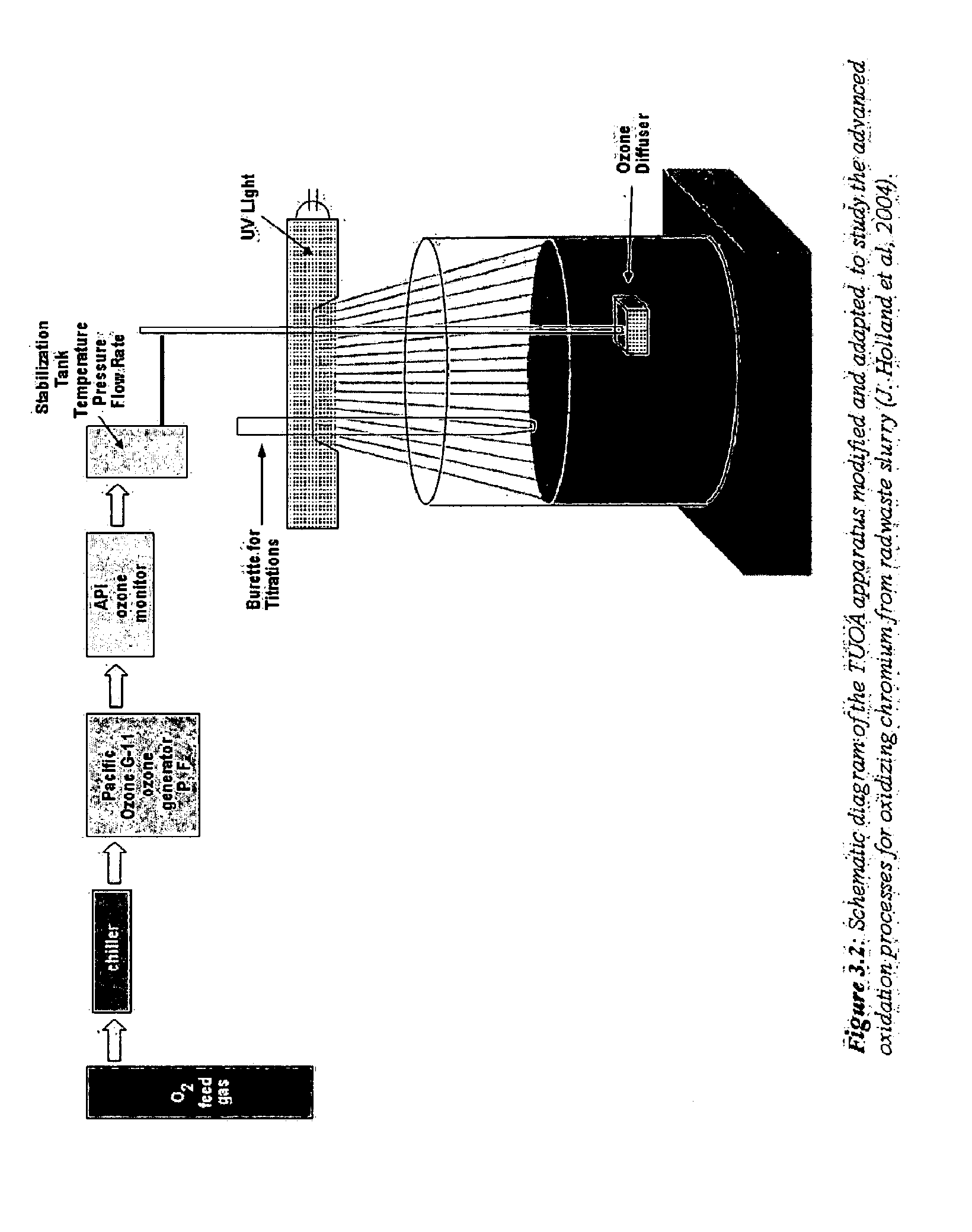Oxidative Treatment Method
a technology of oxidative treatment and treatment method, which is applied in the direction of oxidation treatment of chromium oxides/hydrates, water/sewage treatment by oxidation, radioactive contaminants, etc., can solve the problems of increasing the volume of glass waste, the most expensive environmental cleanup effort ever undertaken in the history of environmental cleanup, and the release of toxic metals, etc., to achieve the effect of effective treatment and rapid and efficient decomposition of each organic molecule or mixtur
- Summary
- Abstract
- Description
- Claims
- Application Information
AI Technical Summary
Benefits of technology
Problems solved by technology
Method used
Image
Examples
Embodiment Construction
[0054]Hanford in-tank waste has been characterized and is believed to contain three major waste fractions. The first of these is a high-level waste supernatant aqueous solution, containing dissolved alkaline salts such as the caustic salt sodium hydroxide (NaOH), which can enhance the precipitation of metallic hydroxides. The second waste fraction is also believed to exist in the form of saltcake resulting from periodic evaporation of the liquid supernatant from the precipitating alkaline phase. The solids result from precipitation as the alkaline liquid is evaporated out of the tank to give way to the formation of saltcake and residual supernatant (Krot et al., 1999). The saltcake and residual supernatant can be dissolved by water and pumped to the receiving tanks by a sluicing method, such as is widely used at the DOE sites to immobilize tank waste as well as to reduce the in-tank waste volume.
[0055]The third waste fraction is the alkaline actinide metal-bearing sludge waste, whic...
PUM
| Property | Measurement | Unit |
|---|---|---|
| Time | aaaaa | aaaaa |
| Chemical properties | aaaaa | aaaaa |
| Color | aaaaa | aaaaa |
Abstract
Description
Claims
Application Information
 Login to View More
Login to View More - R&D
- Intellectual Property
- Life Sciences
- Materials
- Tech Scout
- Unparalleled Data Quality
- Higher Quality Content
- 60% Fewer Hallucinations
Browse by: Latest US Patents, China's latest patents, Technical Efficacy Thesaurus, Application Domain, Technology Topic, Popular Technical Reports.
© 2025 PatSnap. All rights reserved.Legal|Privacy policy|Modern Slavery Act Transparency Statement|Sitemap|About US| Contact US: help@patsnap.com



